Exploring the Mysteries of Han Changan City Ruins: A Journey into Ancient China
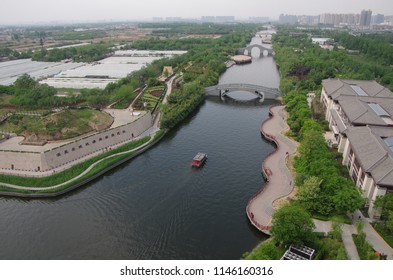
An Essential Guide to Visiting Han Changan City Ruins
In This Guide
- An Essential Guide to Visiting Han Changan City Ruins
- The Rich History and Legends of Han Changan City Ruins
- Main Highlights: What You Absolutely Can’t Miss
- Planning Your Visit: A Practical Guide
- Tickets: Prices, Booking, and Tips
- How to Get There: A Complete Transportation Guide
- Local Cuisine and Accommodation Nearby
- Frequently Asked Questions
- Final Thoughts on Your Trip
Visiting the Han Changan City Ruins is more than just a journey through time; it’s a deep dive into the soul of ancient China. As the capital of the Western Han Dynasty from 206 BC to 8 AD, this sprawling site was once a bustling metropolis that played a pivotal role in the development of the Silk Road and the cultural exchanges that shaped Eastern and Western civilizations.
Imagine walking through the remnants of grand palaces and vibrant marketplaces, where emperors once held court and merchants traded exotic goods from far-off lands. The Archaeological Park of Weiyang Palace, a key highlight within the ruins, invites you to explore its vast expanse, which spans approximately 4.8 square kilometers. Here, the foundations of the largest imperial palace in ancient China whisper tales of opulence and power, reflecting an architectural legacy that influenced dynasties for centuries.

Han_Changan_City_Ruins.
With free admission and accessible entrances from various gates, the park is not only a treasure trove of history but also a place for leisurely strolls amidst lush greenery and seasonal blooms. Whether you are an avid history buff or simply curious about the past, the site offers a unique opportunity to connect with the rich tapestry of China’s heritage.
Prepare for a fascinating experience that intertwines the vibrancy of ancient life with the serene beauty of the landscape. As you wander through the site, you’ll feel the echoes of history, making the Han Changan City Ruins a must-visit destination for anyone wishing to understand the depth of Chinese culture and civilization.
Practical Tips for Your Visit:
- Recommended Time: Allocate 3-4 hours to fully appreciate the ruins and enjoy the park.
- Best Season: Spring and autumn provide comfortable weather for exploration and picturesque views.
- What to Bring: Comfortable shoes, water, and snacks are advisable for an enjoyable visit.
- Nearby Attractions: After exploring the ruins, indulge in local Xi’an delicacies at nearby restaurants to complete your cultural experience.
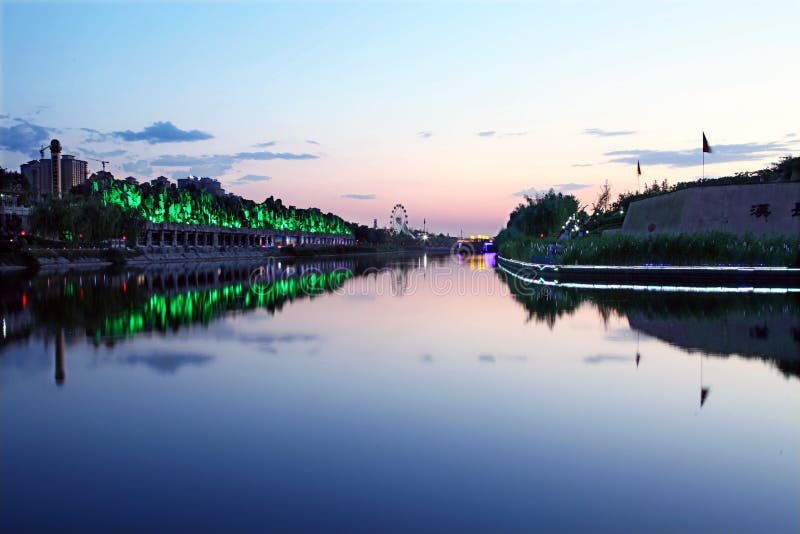
Han_Changan_City_Ruins.
Embark on this journey and discover the echoes of a bygone era that continue to resonate in the heart of Xi’an today.
The Rich History and Legends of Han Changan City Ruins
The Han Chang’an City Ruins, nestled in modern-day Xi’an, are a testament to the grandeur and significance of one of China’s most illustrious ancient capitals. As the heart of the Western Han Dynasty (206 BC – 8 AD), this sprawling city was not merely a political center; it was a vibrant hub of culture, trade, and diplomacy, setting the stage for the rise of the Silk Road and the exchange of ideas between East and West.
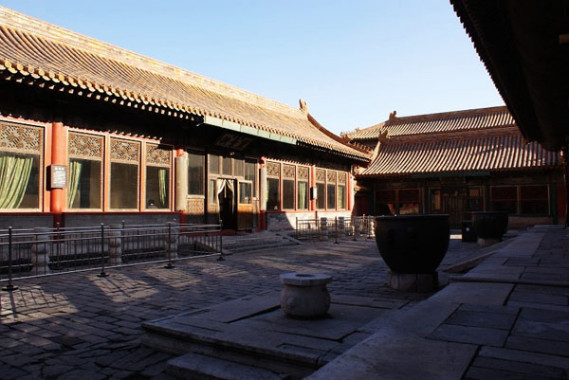
Han_Changan_City_Ruins.
Historical Significance
Constructed in 202 BC, Han Chang’an City was designed with meticulous planning, covering an expansive area of approximately 36 square kilometers. It was strategically located, bordered by the majestic Qinling Mountains to the south and the Wei River to the north, providing natural defenses and a fertile landscape. The city served as the administrative and cultural nucleus of the Western Han Dynasty, influencing governance and architecture in subsequent dynasties.
Key Features:
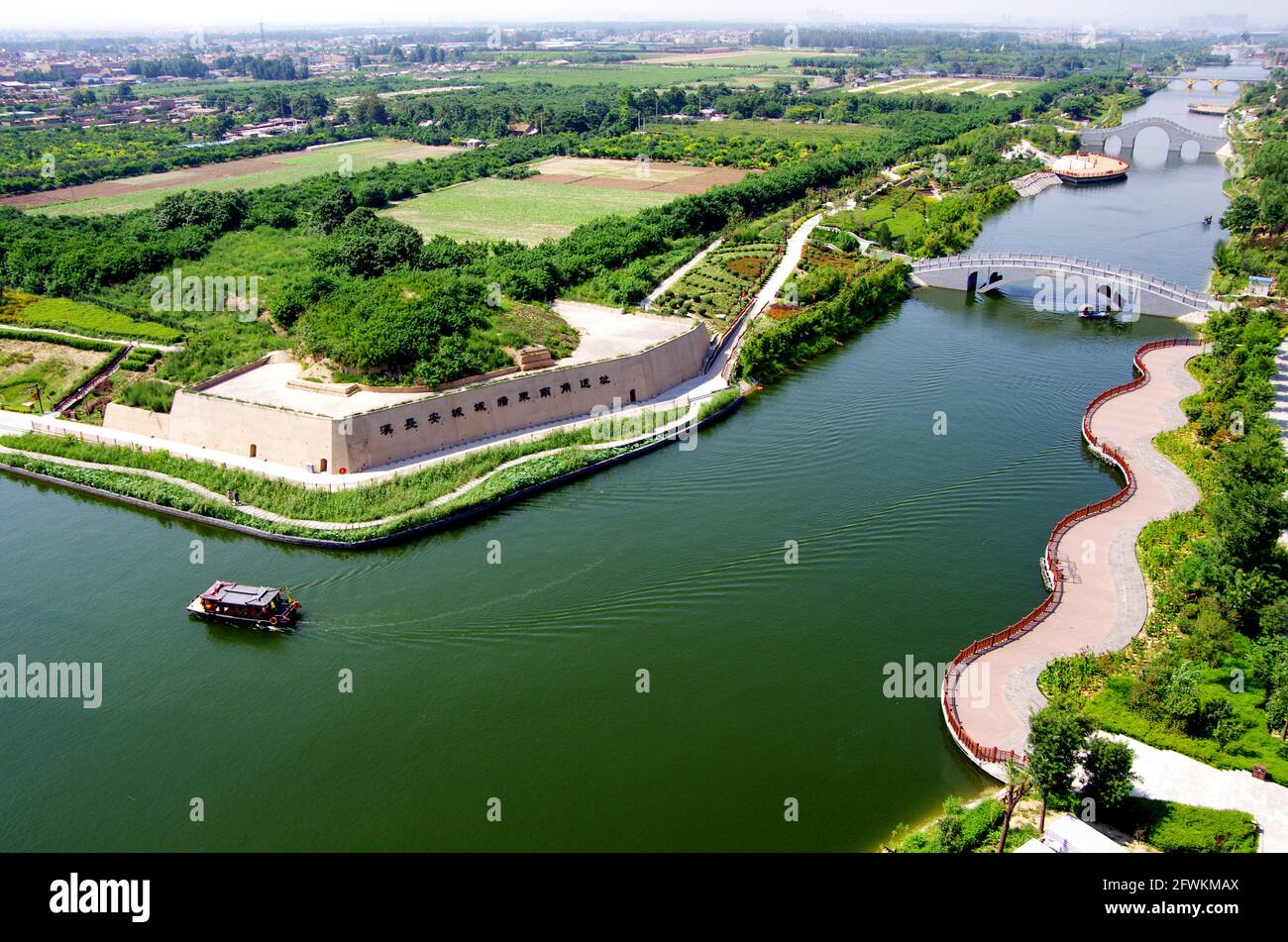
Han_Changan_City_Ruins.
-
Weiyang Palace: The most significant structure within Chang’an, Weiyang Palace was built in 200 BC and is renowned as the largest imperial palace in ancient China. Spanning 4.8 square kilometers, it was not only the residence of emperors but also the epicenter of political decision-making. This palace complex set the architectural standard for future royal residences, leaving an indelible mark on Chinese imperial architecture.
-
Silk Road Origins: Han Chang’an City was pivotal in the establishment of the Silk Road, a network of trade routes that facilitated cultural, economic, and technological exchanges between the East and the West. The city became a melting pot of diverse cultures, influencing art, science, and philosophy across continents.
Legends and Cultural Heritage
The history of Han Chang’an is interwoven with legends that reflect its cultural richness. One such tale is that of Emperor Wu (Han Wudi), who expanded the empire’s territories and initiated the Silk Road’s development. His reign is often romanticized as a golden age of prosperity and cultural flourishing.
Another poignant legend is the story of Lady Feng, a concubine of Emperor Wu, who is said to have brought the art of poetry and music to the palace, forever changing the cultural landscape of the Han Dynasty. Her influence illustrates how personal stories can shape the broader narrative of a civilization.
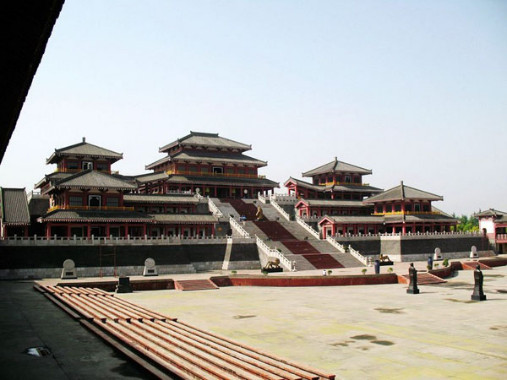
Han_Changan_City_Ruins.
Archaeological Importance
The ruins of Han Chang’an City were designated as a national key cultural relics protection unit in 1961, reflecting their archaeological significance. The site was recognized as a UNESCO World Heritage site in 2014, further solidifying its status as a crucial piece of world history.
Visitors can explore a multitude of ruins that whisper the stories of a bygone era, including the remnants of city walls, palatial foundations, and artifacts that provide insights into the daily lives of its inhabitants. The site is not just a relic of the past; it is a living museum, inviting travelers to step back in time and experience the splendor of ancient China.

Han_Changan_City_Ruins.
Visiting the Ruins
For those keen on exploring the rich tapestry of history woven into the Han Chang’an City Ruins, the Archaeological Park of Weiyang Palace offers a serene environment where history comes alive. With free admission and an ideal timeframe of 3-4 hours for exploration, visitors can walk through the park’s expansive grounds, marveling at the ancient architecture while enjoying the lush greenery that now envelops these historic sites.
Travel Tips:
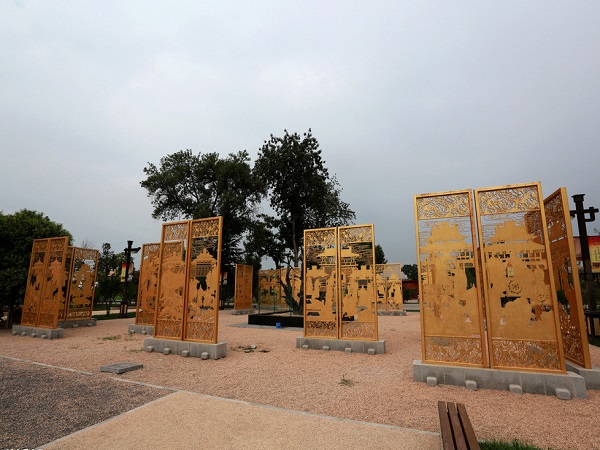
Han_Changan_City_Ruins.
- Best Time to Visit: Spring and autumn are particularly enchanting, with mild weather enhancing the experience.
- What to Bring: Comfortable shoes, water, and snacks are recommended as you navigate the vast park.
- Don’t Miss: The foundations of Weiyang Palace and the scenic views that the ancient structures provide, making it easy to imagine the grandeur of the Han Dynasty.
In summary, the Han Chang’an City Ruins are more than just historical remnants; they are a gateway to understanding the complexities of ancient Chinese civilization. With its rich history and legends, this site draws travelers from around the globe, eager to connect with the past and witness the enduring legacy of one of history’s great empires.
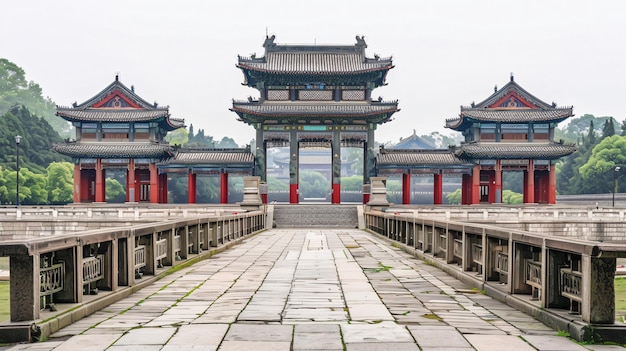
Han_Changan_City_Ruins.
Main Highlights: What You Absolutely Can’t Miss
When visiting the Han Chang’an City Ruins, history enthusiasts and casual travelers alike are in for a breathtaking journey through one of China’s most significant ancient capitals. Here’s a curated guide to the main highlights that you absolutely cannot miss during your exploration of this UNESCO World Heritage site.
1. Weiyang Palace Ruins: The Heart of Imperial Power
The Weiyang Palace was the ruling center of the Western Han Dynasty, constructed in 200 BC. Spanning an impressive 4.8 square kilometers, it was the largest imperial palace in ancient China. As you wander through the remnants of this grand complex, you’ll encounter the foundations of the palace buildings that once housed emperors and their courts. The architectural layout here not only reflects the grandeur of the Han Dynasty but also influenced palace designs in subsequent dynasties.
2. Changle Palace: A Glimpse into Royal Architecture
Head over to the Changle Palace ruins, which showcase the distinctive architectural style of the Han era. This site provides valuable insights into the living conditions of the royal family and their administrative functions. The remnants here tell stories of opulence and governance, allowing you to imagine the bustling life that once filled these spaces.

Han_Changan_City_Ruins.
3. Ancient City Walls: Echoes of a Bygone Era
The remnants of the city walls surrounding Han Chang’an City still stand as silent sentinels of the past. These walls once fortified the city against invasions and symbolize the strategic importance of Chang’an during the Han Dynasty. Strolling along these ancient boundaries, you can almost hear the echoes of the past and visualize the grandeur of the capital.
4. The Silk Road Connection: A Cultural Crossroads
Han Chang’an City was also the historical starting point of the Silk Road, serving as a vital trade network connecting the East and West. The ruins are infused with the spirit of cultural exchange and economic prosperity that characterized this period. Take a moment to reflect on the role this city played in shaping interactions between diverse civilizations.

Han_Changan_City_Ruins.
5. Archaeological Park: Nature Meets History
The Archaeological Park surrounding these ruins is a tranquil oasis that juxtaposes ancient history with natural beauty. The park is dotted with lush greenery, providing a serene environment for walking and reflection. Don’t miss the flower fields that bloom seasonally, particularly the vibrant sunflowers and pink muhly grass, which add a picturesque backdrop to your historical exploration.
6. Educational Signage: Understanding the Past
Throughout the park, informative signs and markers provide historical context for the various ruins. These resources are invaluable for gaining a deeper understanding of the political, economic, and cultural significance of the Han Dynasty. Allocate 3-4 hours to fully immerse yourself in the stories these ruins tell.
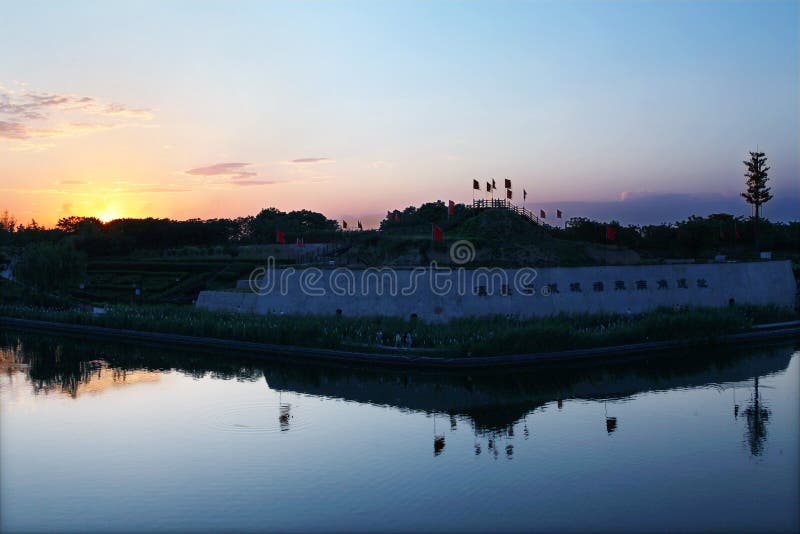
Han_Changan_City_Ruins.
7. Accessibility and Visitor Tips
- Admission: Free entry makes this site accessible to all.
- Best Time to Visit: Spring and autumn are ideal for pleasant weather and blooming flora.
- What to Bring: Comfortable walking shoes, water, and snacks for a leisurely day of exploration.
8. Nearby Attractions: Extend Your Journey
After your visit to the Han Chang’an City Ruins, consider exploring other nearby historical landmarks in Xi’an, such as the Terracotta Army and Ming Dynasty City Walls, to further enrich your understanding of China’s rich cultural heritage.
Conclusion
A visit to the Han Chang’an City Ruins is not just an exploration of ancient architecture; it’s a journey through time that connects you with the very essence of Chinese history. Be sure to take your time to absorb the atmosphere, and let the stories of this monumental site inspire your travels through China’s illustrious past.

Han_Changan_City_Ruins.
Planning Your Visit: A Practical Guide
Visiting the Han Chang’an City Ruins (汉长安城遗址) offers a remarkable glimpse into China’s illustrious past. As the capital of the Western Han Dynasty from 206 BC to 8 AD, this site is steeped in history and significance. Here’s everything you need to know to make the most of your visit.
Getting There
Location:
The Han Chang’an City Ruins are situated in the Weiyang District of Xi’an, Shaanxi Province. The main entrance is on Dengliu Road, easily accessible via public transport or private vehicle.
Public Transport:
– Metro: Take Line 1 to Zaohe Station, then a short taxi ride will take you to the site.
– Bus: Routes such as Bus 865 drop you near the North Gate. A brief 900-meter walk will lead you to the entrance.
Driving:
If you prefer to drive, ample parking is available. The parking fee is approximately ¥3 per hour.
Admission and Opening Hours
Admission:
Entry to the park is free, making it accessible for all travelers.
Opening Hours:
The park is open 24 hours a day, allowing you to explore at your convenience. However, visiting during daylight hours is recommended for a more enriching experience.
What to Expect
Duration of Visit:
Plan to spend about 3 to 4 hours exploring the ruins. This allows ample time to appreciate the historical significance and take in the expansive grounds.
Key Attractions:
– Weiyang Palace Ruins: The most significant structure within the site, these ruins represent the original imperial palace of the Han Dynasty, showcasing its architectural grandeur.
– Changle Palace Ruins: Another key area that provides insight into the architectural styles of the Han era.
– City Walls: Remnants of the ancient city walls still stand, offering a tangible connection to the past.
Park Features:
– The park is beautifully landscaped with lush green grass and trees, providing a serene atmosphere to soak in the history.
– Historical building foundations and excavated relics are displayed throughout the park, allowing for an immersive educational experience.
Tips for a Great Visit
- Best Time to Visit: The ideal seasons are spring and autumn due to the pleasant weather and stunning natural scenery.
- Comfortable Footwear: Wear comfortable sneakers or walking shoes, as the park is extensive and involves a fair amount of walking.
- Pack Essentials: Bring water and snacks, especially if you plan to picnic on the grounds. There are few food options inside the park.
- Time Your Visit: Late afternoon visits can be particularly beautiful as the sun sets, illuminating the ruins in a warm glow.
Nearby Attractions
After exploring the Han Chang’an City Ruins, consider visiting other nearby historical sites in Xi’an:
– Terracotta Army: A UNESCO World Heritage site, known as the “Eighth Wonder of the World.”
– Ming Dynasty City Walls: One of the best-preserved ancient fortifications in China.
– Xi’an Museum: Offers a deeper understanding of the region’s rich history.
Conclusion
A visit to the Han Chang’an City Ruins is not just a walk through ancient history; it is a journey into the heart of Chinese civilization. With its free admission, easy access, and breathtaking remnants of a bygone era, this site is a must-see for anyone interested in the cultural tapestry of China. Embrace the opportunity to walk where emperors once tread and allow the echoes of the past to enrich your travels.
Tickets: Prices, Booking, and Tips
When planning your visit to the Han Changan City Ruins, you’ll be pleased to know that the experience is both accessible and enriching. Here’s what you need to know about entry, ticketing, and useful tips to enhance your journey through this remarkable historical site.
Admission Details
-
Ticket Price: Admission to the Han Changan City Ruins is free. This makes it an excellent opportunity for travelers to immerse themselves in one of China’s most significant cultural heritage sites without the burden of entry fees.
-
Opening Hours: The park is open 24 hours a day, allowing you the flexibility to explore at your leisure. However, visiting during daylight hours is advisable to fully appreciate the ruins and surrounding landscapes.
Access Points
There are multiple access points to the park, including:
– Xi’an Gate
– Zhicheng Gate
These entrances are well-marked, and the pathways leading into the park are designed for easy navigation.
Recommended Duration
Plan to spend about 3 to 4 hours exploring the ruins. This timeframe allows for a leisurely stroll through the historic grounds, where you can observe the remnants of palace foundations, city walls, and other significant structures from the Western Han Dynasty.
Getting There
-
Public Transport: If you’re using public transport, bus services are available that can get you close to the site. The 865 bus stops at Beigongmen Station, from where it’s a short walk to the entrance.
-
Driving: For those who prefer to drive, ample parking is available. The fee is a modest ¥3 per hour, making it convenient for visitors coming by car.
Tips for Your Visit
-
Best Time to Visit: The ideal seasons to explore the site are spring and autumn. During these months, the weather is typically mild, enhancing your experience of the natural beauty surrounding the ruins.
-
Wear Comfortable Footwear: The park covers a significant area, so wearing comfortable shoes is essential for an enjoyable visit.
-
Pack Essentials: Although there are no formal dining facilities within the park, consider bringing your own snacks and water. There are plenty of picturesque spots ideal for a picnic.
-
Cultural Insights: Take advantage of the informational signs scattered throughout the site to deepen your understanding of the Han Dynasty’s history. The ruins offer a glimpse into the political, economic, and cultural life of ancient China.
-
Photography Opportunities: For photography enthusiasts, the best lighting occurs from late afternoon to sunset. If you wish to capture stunning images, plan your visit accordingly.
Visiting the Han Changan City Ruins is not merely about witnessing ancient architecture; it’s about stepping back in time to connect with the rich tapestry of Chinese history. Enjoy your journey through this UNESCO World Heritage site, and let the echoes of the past guide your exploration.
How to Get There: A Complete Transportation Guide
Visiting the Han Chang’an City Ruins (汉长安城遗址) is a remarkable journey into China’s rich history, particularly that of the Western Han Dynasty. To ensure your trip is smooth and enjoyable, here’s a comprehensive guide on how to reach this fascinating archaeological site.
Getting to Han Chang’an City Ruins
1. By Air
Xi’an Xianyang International Airport (XIY) is the closest major airport, located approximately 40 kilometers from the city center. From the airport, you have several options:
- Taxi: This is the most convenient option, taking around 50 minutes to reach the ruins. The fare is approximately ¥100-¥150.
- Airport Shuttle Bus: Take the airport shuttle bus to the Xi’an Railway Station and transfer to a local taxi or ride-hailing service to the site.
2. By Train
Xi’an Railway Station is well connected to major cities across China. Once you arrive:
- Metro: Take Metro Line 1 from the railway station towards Zaohe Station. After disembarking at Zaohe, it’s about a 15-minute walk to the Han Chang’an City Ruins entrance.
- Taxi: A taxi ride from the railway station to the ruins will take around 20 minutes, costing about ¥30-¥40.
3. By Bus
Xi’an has an extensive bus network that can get you close to the site. Consider these options:
- Local Buses: Take bus route 865 to Beigongmen Station. From there, it’s approximately a 900-meter walk to the north gate of the archaeological park.
- Long-Distance Buses: If you are traveling from nearby cities, you can catch a long-distance bus to Xi’an and then use local transportation (metro or taxi) to reach the ruins.
4. Self-Driving
For those who prefer the freedom of driving:
- Parking: There is ample parking available near the park. The fee is around ¥10 for an entry with no time limit.
- Navigation: Use a GPS-enabled device or a navigation app, entering “Han Chang’an City Ruins” to guide you directly to the entrance.
5. Local Transportation
Once in Xi’an, the most efficient ways to navigate to the ruins include:
- Metro: The nearest metro station is Zaohe Station on Line 1. From there, it’s a short walk to the park.
- Taxis and Ride-Hailing Services: Taxis and apps like Didi are widely available and provide a convenient way to reach your destination.
Tips for Visiting
- Opening Hours: The park is open 24 hours a day, so you can visit at your convenience. However, the best time for exploring is during daylight hours for a full experience.
- Admission: Entry to the Han Chang’an City Ruins is free, making it an accessible site for all travelers.
- What to Bring: Wear comfortable shoes for walking, and consider bringing water and snacks, as the park is expansive and may take 3-4 hours to explore thoroughly.
With this guide, you’re well-equipped to embark on a journey to one of China’s most significant historical sites. Enjoy stepping back in time at the Han Chang’an City Ruins!
Local Cuisine and Accommodation Nearby
Discovering Local Flavors and Stays Near Han Chang’an City Ruins
As you immerse yourself in the rich history of Han Chang’an City Ruins, don’t miss the opportunity to indulge in the local cuisine and find a comfortable place to rest. The area surrounding this monumental site offers a delightful combination of authentic flavors and welcoming accommodations, perfect for international travelers eager to experience the depth of Chinese culture.
Culinary Delights
1. Gourd Chicken (葫芦鸡)
A local specialty hailing from Tang Village, Gourd Chicken is a must-try dish. This succulent chicken is often cooked with local herbs and served in a unique gourd-shaped vessel, giving it a distinctive taste that reflects the region’s culinary traditions. Look for restaurants in the vicinity that specialize in this dish for an authentic dining experience.
2. Jiaotuan (饺团)
For those looking for something a bit more adventurous, Jiaotuan is a popular sour-spicy dish among locals. This dish features a mix of dumplings and vegetables, seasoned with a piquant sauce that will tantalize your taste buds. Often found in small eateries, it provides a genuine taste of Xi’an’s vibrant food culture.
3. Sunflower Ice Cream
If you have a sweet tooth, don’t miss out on trying the limited edition sunflower ice cream available at the nearby Xi’an Sunflower Field. This refreshing treat offers a unique flavor inspired by the local sunflowers, making it a perfect snack during your exploration.
4. Fresh Sunflower Seeds
Grab a bag of fresh sunflower seeds to take home as a delightful souvenir. These seeds, often roasted and salted, embody a simple yet cherished snack in Chinese culture.
Nearby Accommodations
1. Grand Park Xi’an (大公园酒店)
Located just a short distance from the Han Chang’an City Ruins, Grand Park Xi’an offers modern amenities combined with traditional hospitality. Guests can enjoy comfortable rooms, a fitness center, and a restaurant serving both local and international cuisine. It’s an ideal base for exploring the historical sites in and around Xi’an.
2. Xi’an Sofitel on Renmin Square (西安瑞士酒店)
For those seeking a touch of luxury, the Xi’an Sofitel on Renmin Square provides elegant accommodations with stunning views of the city. With its proximity to major attractions, including the terracotta warriors and the city wall, it’s perfect for travelers looking to balance comfort with cultural exploration.
3. Xi’an Hostel (西安青年旅舍)
For budget-conscious travelers or backpackers, Xi’an Hostel offers a friendly atmosphere and affordable rates. Situated in the heart of the city, this hostel provides easy access to local eateries and attractions, making it a great choice for those wanting to explore Xi’an without breaking the bank.
Tips for Your Visit
- Planning Your Meals: Consider dining at local restaurants to truly experience the flavors of Xi’an. Many establishments offer traditional dishes that have been passed down through generations.
- Booking Accommodation: It is advisable to book your accommodation in advance, especially during peak tourist seasons, to ensure you find a place that meets your needs.
- Local Markets: Don’t forget to explore local markets near the ruins. They often feature street food vendors and small shops where you can try various snacks and buy unique crafts.
With a blend of historical exploration and culinary adventure, your visit to the Han Chang’an City Ruins will be a memorable experience that connects you with the heart of Chinese culture. Enjoy your journey through time and taste!
Frequently Asked Questions
Frequently Asked Questions about Han Changan City Ruins
-
What is Han Changan City?
Han Changan City, also known as the ruins of the capital of the Western Han Dynasty, was established in 202 BC and served as the political, economic, and cultural center of ancient China. It is renowned for its historical significance, particularly as the origin point of the Silk Road. -
Where is the Han Changan City Ruins located?
The ruins are situated in Xi’an, Shaanxi Province, China. The site encompasses the remains of Weiyang Palace, which was the largest imperial palace in ancient China, and is surrounded by the Qinling Mountains and the Wei River. -
Is there an admission fee to enter the ruins?
No, entry to the Han Changan City Ruins Park is free of charge. Visitors can explore the site without purchasing a ticket, making it an accessible destination for all. -
How long should I plan to visit the site?
It is recommended to allocate around 3 to 4 hours for your visit. This allows ample time to explore the various palace ruins, historical foundations, and enjoy the park’s beautiful landscapes. -
What are the best times to visit?
The ideal times to visit are during spring or autumn when the weather is mild, and the flowers are in bloom. The park is particularly enchanting in the late afternoon, especially around sunset, which provides stunning photo opportunities. -
How can I get to Han Changan City Ruins?
The site is conveniently accessible via public transportation. You can take Metro Line 1 to Zaohe Station or take a taxi from various points in Xi’an. If driving, parking is available nearby, typically at a low fee. -
What should I wear and bring for my visit?
Comfortable walking shoes are highly recommended due to the park’s expansive area. It’s also wise to bring water, snacks, and sun protection. For photography enthusiasts, light-colored clothing can create beautiful contrasts against the ruins and the natural scenery. -
Are there any guided tours available?
While the park itself does not require a guided tour, information panels are provided throughout to enhance your understanding of the historical context. However, you can also find local tour guides in Xi’an who offer in-depth explorations of the site and its significance.
Final Thoughts on Your Trip
As your journey through the Han Chang’an City Ruins comes to an end, reflect upon the remarkable tapestry of history, culture, and architectural grandeur that this ancient site offers. The remnants of the Western Han Dynasty’s capital, once a vibrant center of trade and governance, now invite you into a realm where the echoes of the past resonate with every step you take.
Embrace the Legacy
Walking amidst the sprawling grounds of the Archaeological Park of Weiyang Palace, you’re not merely an observer; you become part of a continuum that stretches across millennia. The foundations of the grand palaces remind us of the opulence that once thrived here, while the ruins whisper tales of emperors and emissaries who shaped the course of history.
A Cultural Mosaic
This site is more than just historical ruins; it is a living testament to the cultural exchanges that occurred along the Silk Road. As the starting point of this ancient trade route, Han Chang’an City was instrumental in bridging Eastern and Western civilizations, fostering a rich dialogue that has influenced countless generations.
Plan Your Return
Whether you find tranquility in the vibrant sunflower fields or are captivated by the intricate architectural styles of the Han Dynasty, Han Chang’an City is a place to return to. Each season brings a new palette of colors and moods, from the blooming flowers of spring to the golden hues of autumn.
Final Reflections
As you leave this historic site, take with you not only memories of its majestic remains but also a deeper appreciation for the intricate history of Chinese civilization. The Han Chang’an City Ruins are a reminder of the enduring legacy left behind by those who came before us—a legacy that continues to inspire and educate.
Until We Meet Again
We encourage you to explore further, delve deeper, and allow the stories of this ancient city to enrich your understanding of China’s profound history. Your adventure may conclude here, but the journey of discovery is just beginning. Safe travels!